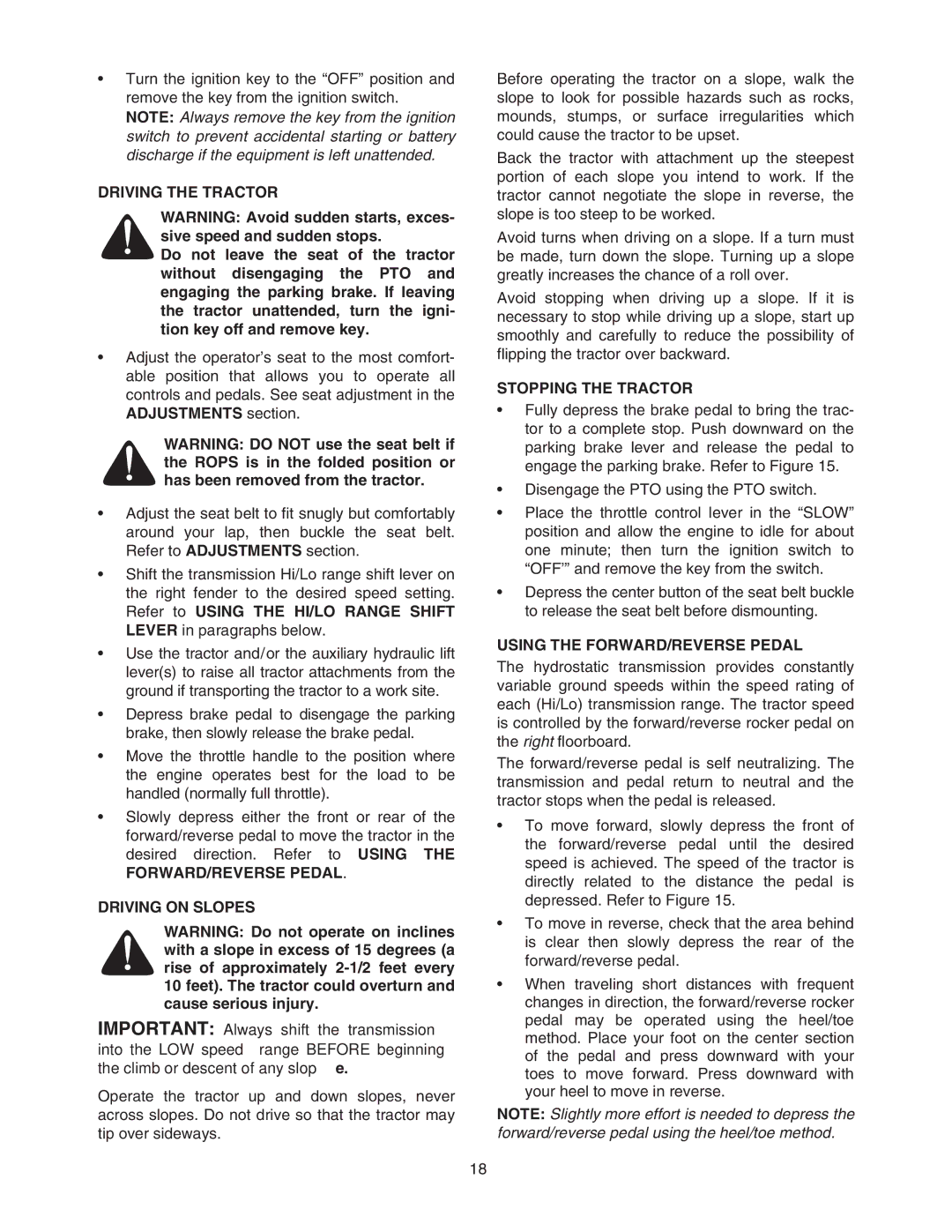6284 specifications
The Cub Cadet 6284 is a robust utility tractor known for its versatility and reliability. Designed for both residential and commercial use, it is ideal for tasks such as landscaping, gardening, and light agricultural work. This model stands out in the compact tractor market due to its powerful engine and innovative features that boost productivity and ease of use.At the heart of the Cub Cadet 6284 lies a powerful 28-horsepower Kohler diesel engine, which provides ample torque for demanding applications. This engine is designed for efficiency and durability, ensuring long-lasting performance and reduced operating costs. The liquid-cooled design helps to maintain optimal operating temperatures, extended engine life, and consistent power output, making it suitable for various weather conditions.
One of the key characteristics of the 6284 is its hydrostatic transmission, which offers seamless shifting without the need for clutching. This feature allows operators to maintain a steady pace while maneuvering in tight spaces or during intricate tasks. The intuitive controls enhance user experience, making it an excellent choice for both seasoned operators and newcomers alike.
The 6284 features a heavy-duty, rear-mounted three-point hitch with a standard lift capacity which enables the attachment of various implements, enhancing its versatility. With a variety of compatible attachments, including rotary cutters, plows, and loaders, users can easily switch between tasks, making it a multifunctional workhorse.
Another notable technology integrated into the Cub Cadet 6284 is the ergonomic operator station. The layout is designed with user comfort in mind, featuring an adjustable seat, easy-to-reach controls, and excellent visibility, allowing operators to work efficiently for extended periods. The compact design aids in maneuverability, especially in more confined spaces.
Additionally, the Cub Cadet 6284 is built with a sturdy frame and quality materials, designed to withstand heavy use. The all-steel construction contributes to its overall durability, ensuring that the tractor can handle tough jobs without compromising performance.
In summary, the Cub Cadet 6284 is a powerful and efficient compact utility tractor that offers reliable performance for a variety of tasks. Its combination of a robust engine, hydrostatic transmission, and ergonomic design makes it a valuable addition to any toolkit. Whether for residential gardening or more extensive commercial applications, the 6284 is equipped to tackle the job with ease and efficiency.
